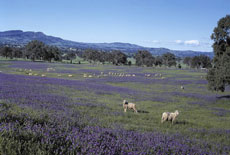
Weeds wipe 15% off the value of livestock commodities
 Australia’s livestock producers are losing income of up to $2.4 billion a year because of weeds in pastures, according to researchers from the Cooperative Research Centre for Australian Weed Management.
Australia’s livestock producers are losing income of up to $2.4 billion a year because of weeds in pastures, according to researchers from the Cooperative Research Centre for Australian Weed Management.
The greatest loss due to weeds was experienced by the beef industry ($883 million),
dairy industry ($650 million), followed by the wool industry ($588 million) and sheep meat industry ($283 million).
NSW Department of Primary Industries’ Senior Research Scientist, Randall Jones, and University of New England Associate Professor, Jack Sinden, estimate weeds are costing Australia’s pasture-based livestock industries $2.4 billion a year, or 15% of the gross value of livestock commodities.
This is chiefly in the form of forgone income, because weeds compete with pasture and reduce stock carrying capacity.
In a paper delivered to the 2006 Grasslands Society conference in Wagga Wagga, Dr Jones said the news was however not all bad, because a change from continuous stocking to a more flexible management approach could significantly boost incomes.
“Options to reduce the impact of weeds can return substantial economic benefits to producers and industry.
“Integrated weed management (IWM) is one option, particularly where it includes grazing management tactics which shift species composition from undesirable annual and broadleaf weed species to more desirable native and introduced perennial grasses.
“An IWM strategy that includes a tactical summer rest could improve economic returns by 70% over a 20 year period compared to a continuous stocking rate strategy.”
Dr Jones said continuous stocking, which is the standard approach to grazing, leads to increased weed densities.
“As densities increase there is not only a reduction in the biomass of desirable species but also a negative change in the species composition of a pasture which can have long term implications on farm returns.”
The two economists looked at a case study in the Central Tablelands of NSW – a merino wether enterprise with stocking rates ranging from 5 to 12.5 wethers per hectare.
The pasture comprised sown introduced perennial grasses (phalaris, cocksfoot and sub-clover) with an initial grass composition of 80%. If perennial grass composition fell below a threshold of 50%, then the pasture was rested.
Dr Jones said grazing rests provided significant benefits at higher stocking rates.
“There was a net present value of $1,238 per hectare for a 12.5 wether per hectare stocking rate, when a summer rest was imposed after perennial grass composition declined below 50%.
“This represents a 70% improvement in the net present value over a 20 year period, compared to the best return that could be obtained from a continuous stocking rate strategy.”
The economists also compared continuous stocking at 10 wethers per hectare, with the same stocking rate with a grazing rest, over 20 years.
“This illustrates how the periodic use of a grazing rest can maintain perennial grass at a composition of around 50%, whereas perennial grass declines further under the continuous grazing strategy”, Mr Jones said.
Email:

